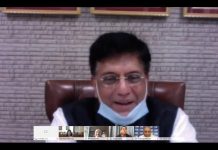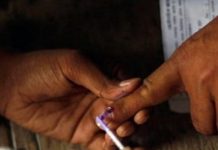 The new Prevention of Terrorism Ordinance (POTO) seeks to prevent not only terrorism, but also free and fair journalism, if the government has its way. POTO, considered to be harsher and even more draconian than the earlier Terrorists and Disruptive Activities (TADA) Act, can radically change the way news is gathered and disseminated, ultimately undermining the freedom of the press in substantial manner. “POTO is a very harsh law and an encroachment in the freedom of the press in an unprecedented manner,” says veteran journalist and former editor of The Times of India, Shyam Lal.
The new Prevention of Terrorism Ordinance (POTO) seeks to prevent not only terrorism, but also free and fair journalism, if the government has its way. POTO, considered to be harsher and even more draconian than the earlier Terrorists and Disruptive Activities (TADA) Act, can radically change the way news is gathered and disseminated, ultimately undermining the freedom of the press in substantial manner. “POTO is a very harsh law and an encroachment in the freedom of the press in an unprecedented manner,” says veteran journalist and former editor of The Times of India, Shyam Lal.
Under the new law, journalists or reporters will be held guilty if they meet or communicate with anybody from a banned organisation, or even report statements that could be seen as “inviting support”. Journalists will have to share with the police whatever information they have on “terrorist activities,” even without the police asking for it — otherwise they could be penalised. Although these provisions apply to all citizens, POTO is considered a direct attack on the media, for it is part of the reporters’ job to communicate with insurgents and often banned organisations – making the intentions of the government highly doubtful in promulgating the ordinance. “The government is increasingly being exposed in the media in recent times. This ordinance has nothing to do with tackling terrorism. POTO only seeks to do a cover-up job for the government,” says Harkishen Singh Surjeet, General Secretary, Communist Party of India (Marxist).
The law will keep a journalist under the constant possibility of intimidation and harassment. “How do you expect journalists to know who is a terrorist and who is not? Until the journalists go and meet everyone and facts are disclosed to them, how do you expect journalists to find out? Unless I go and meet a member of the Lashkar-e-Toiba, how do I know he is a member of the Lashkar-e-Toiba? A journalist is supposed to go out and gather information,” says veteran journalist Kuldip Nayyar.
Besides making the journalist vulnerable to legal harassment, the ordinance will make news reporting one-sided – the only channel of information in sensitive areas such as Kashmir and the Northeast will be government agencies. Any journalist who tries to probe the other side of the story – as fair reporting naturally demands — is liable to be pulled up by the government, that too, even without substantial evidence. “This law will make journalists merely informers of the police,” remarks columnist Praful Bidwai, “That’s when they are not mouthpiece for the police, reporting only what the government agencies have to say.”
“The ordinance is a serious attempt to prevent the press from covering vital areas of public interest, including happenings in Kashmir and the Northeast. A journalist will not be able to cover both sides of the story,” says Ajit Bhattacharjea, Director, Press Institute of India (PII). “One has to address the political and economic reasons for the cause of terrorism. Only the media can highlight these issues, which will in turn help the government to explore political solutions to terrorism,” says Congress Rajya Sabha member Kapil Sibal, who describes the new ordinance as anti-democratic. “What reflects in the new ordinance is the government’s refusal to see the political questions behind terrorism. Trying to deal with terrorism with black laws and blocking information hardly solves the problem. On the contrary, it accentuates the crisis,” he says.
The government’s argument that the media is giving too much publicity to “terrorist” organisations and they are thriving on this publicity also finds few takers. “It is true that terrorists thrive on publicity and there should be stringent anti-terrorism laws. But the restraint of the media should be self-imposed and never government-controlled, “ argues Chandan Mitra, editor, The Pioneer.
The ordinance will largely compromise the autonomy – all aberrations notwithstanding – that the Indian media has taken pride in. They will be forced to reveal their source of information, which in itself will throttle independent reporting. “Some sources that give journalist the information may not want to be named. In such a case, the authorities would be abusing a journalist’s pride and professionalism. No one should be forced to shell out their sources, as this would be a blatant, dictatorial rule and abuse of a profession built on truth, reality and facts,” says Rajeev Dhawan, lawyer and activist who is a campaigner for right to information.
With all the gloom and threats that the new ordinance holds out, there is a reason to be relieved, at least for the time being. The ordinance is unlikely to be passed in the Upper House of the Parliament if the Opposition parties stick to their present position of voting against it. The government doesn’t have a majority in Rajya Sabha and it needs the support of Opposition parties to pass any bill.
letters@tehelka.com












